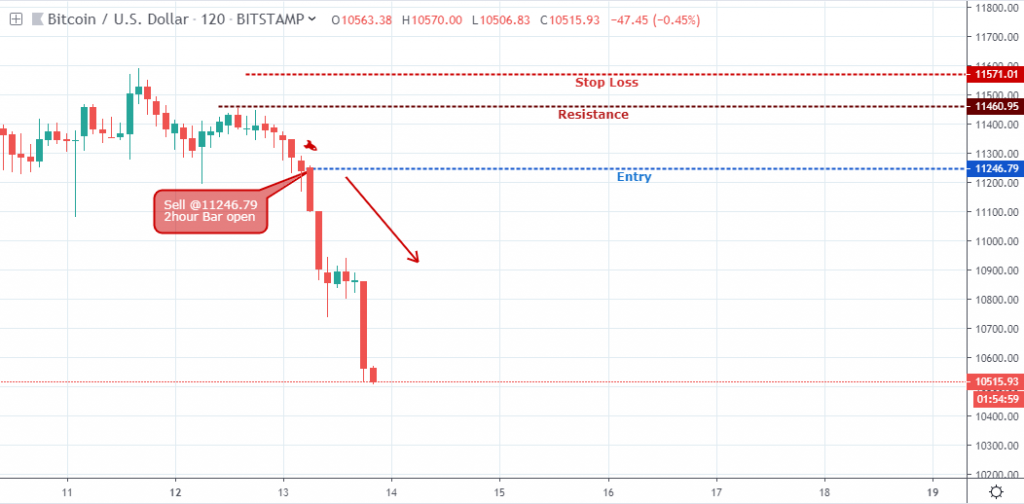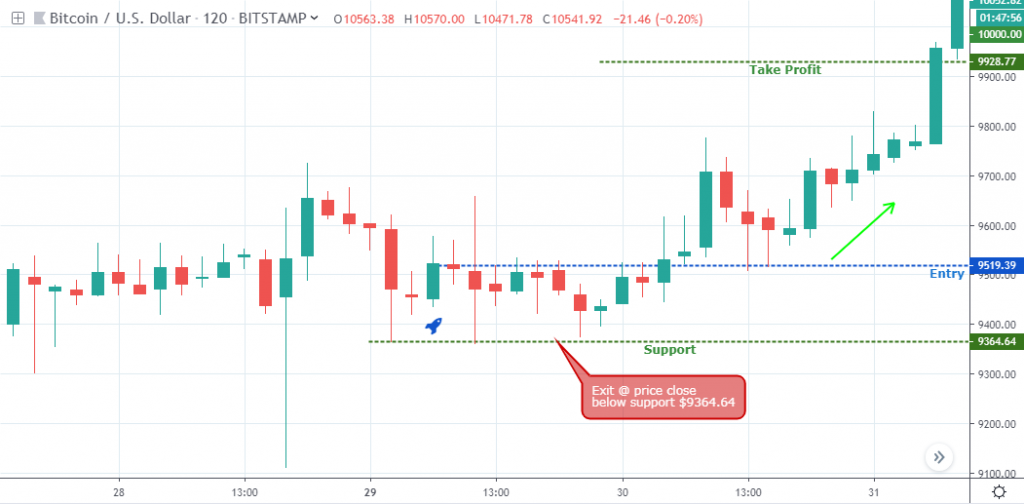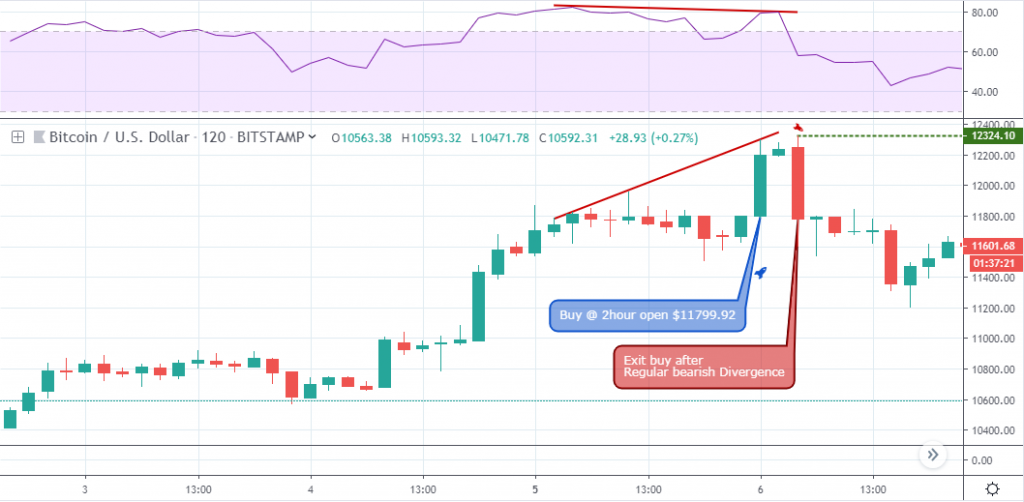Most inexperienced traders often make the mistake of losing money than admitting they were wrong about a trade. Much of this can be attributed to the fear of missing out, which is often referred to as FOMO.
[wlm_private “Crypto Trader Pro – Monthly|Crypto Trader Pro – Yearly|Crypto Trader Pro (Lite)”]
Taking measurable losses at an excellent reward to risk ratio (>= 2X) with a strategy that records an above average win rate is inevitable when trading cryptocurrencies. Be virtue of being human, we often make emotional decisions. Unfortunately, this gut-check reaction can affect how people trade and react to market situations without actually researching the history or watching true data.
There are no traders, pro or rookie, that wants to lose the value in their portfolio, but to be successful as a trader, a strategic plan must be implemented. Of course, experienced traders will tell you that losing is just a part of trading. In essence, you can’t win them all, but you certainly can give yourself the best chance to win. Understand, that if you are entering the cryptocurrency market, it is arguably one of the most volatile. Price and market changes are largely unpredictable, and finding a the right trading line is a challenge, but not impossible.
Losing happens. The goal of successful trading is not to avoid losing but how to cope, manage and recover from those losses. This begs the question: How do you accept and manage loss trading?
A fixed level away from your entry point
There is no better place to start than from a fixed level away from your entry point. Set an automatic exit level at a fixed distance away from your entry point, whether it is a buy or sell order. This protects your account from further losses and avoids second-guessing your decision to exit the trade. Remember, emotional decisions are often bad decisions.
Popularly known as a stop-loss level, traders establish this level below an identified technical support. Establish the sell order and resistance with a sell order as shown in the image below.

Price close below or above a significant support level away from your entry point
Have you ever entered a trade, say in a bullish direction then set your stop-loss at a fixed distance away from your order, only to later find out that your deal was in loss and the trade still went through? It is frustrating, but this happens.
Assuming you’ve placed a buy order on a cryptocurrency, one way to optimize your trade is to manually or algorithmically look for a price close below a carefully analyzed support level that is established at a distance below your entry point. Doing this can avoid whipsaws and whiplashes in the market and your trade has an better opportunity to reach its full potential and profit.

If the crypto asset price close below your fixed level, immediately exit your buy order in a loss and wait for new entry signals for long or short.
Chart pattern Exit
Another way to accept a loss in the market is when an opposite chart pattern to your initial trade direction is signaled.

For example, if a regular bullish divergence pattern is signaled after entering a buy trade, and the price moves away from your entry point, the best action would be to swallow your pride and cut your losses short. From there the decision is to either reverse your trade direction or stay on the sidelines until it’s safe to enter again.
Suggested guidelines on taking a loss
Everyone has their own unique trading style and how they react to adverse market changes, but the following suggested guidelines can help you avoid the pitfalls of FOMO.
Losing is Normal
Loss happens. Knowing you’re on a losing track and making adjustments will save your portfolio. Don’t fall in love with any one crypto because at any point in time it could break your heart. If you are trading, chances are you want to make money. Cold, calculated decisions are needed. Remember: Successful traders have all had losses. The difference between the pro and the rookie is how you react to those losses.
Even the best traders experience loss that might be outside of their control. Technology glitches, unexpected events, or general speculation can also lead to a loss. Bad days happen. Having a strategic trading plan will help you get past it.
Accept responsibility
Sometimes the only one who can take responsibility for a loss is the one looking back at you in the mirror. Accepting responsibility is an objective way to manage loss. As mentioned earlier, other factors can plan a part in a trade loss, but ultimately, it is the trader who must acknowledge their role in bad decisions. Only then can you respond with a smart and objective action.
It was George Bernard Shaw who said: “It is not the recollection of our past that makes us wiser, but being responsible for our future.”
Accepting responsibility takes you a further. This mature attitude will keep you grounded, motivated, and mentally healthy for your next trade.
Take a break
Sometimes taking a break from trading allows you to literally put some distance between you and a bad relationship. Record your loss, gather the history and data of the crypto trades, take a long hard look at your actions in the market, and make adjustments to your strategy. Ask yourself, what could I have done differently? This break could decrease your stress levels and give you an objective look at the situation.
Sometimes taking a break means to literally stop. Switch off trade mode, close the laptop and go for a walk. Recharge your batteries and reconnect with other things to help get your head back into the game.
When we don’t take a step back, emotional traders begin “revenge trading” which is detrimental behavior because it often leads to irrational trades to win back losses in the shortest amount time. Don’t do it. Take a break instead.
Review your Strategy
Successful traders often have well-prepared trading and money management strategies that they always stick to when trading. Plans are great but like anything in a volatile market, even the best plans cannot guarantee success.
If your plans include bots and market analysis, take a hard look at your set up and make small adjustments. Remember, a winning plan doesn’t always need a major overhaul. You do not have to recreate the wheel here. There will be times when strategies become obsolete especially when diversifying your portfolio.
It behooves us to ask: Do you have a plan? If you don’t, then your chances of losing money is significantly higher. Stop what you’re doing and review your actions. If you’ve been making money, great! Take note of those practices and try implementing them elsewhere in your portfolio. Have a plan. Period.
Try, Try again
Unless you’ve had a complete loss, there is really no reason to quit trading. Try, try again. Do your homework, educate yourself, and come back with renewed energy and insight.
Maybe you don’t launch with a big trade. Try smaller ones to regain your confidence. Eventually, you’ll find a rhythm and flow, and find yourself making adjustments to volatile markets to earn profits. Do not quit.
Conclusion
Trading crypto is not easy or straightforward. It comes with several stops on the way. Successful traders will always have some history in losses, but the same successful trader learns from those old mistakes.
[/wlm_private]
Want to read the rest of the article? Join our pro-membership and receive all of the following:
✅Access to ALL content.
✅Access to the CTN editorial staff.
✅Access to our CTN trading dashboard.
✅Access to our exclusive telegram channel where all our pro-members and editorial staff are in.
✅Ability to request content/research material!
